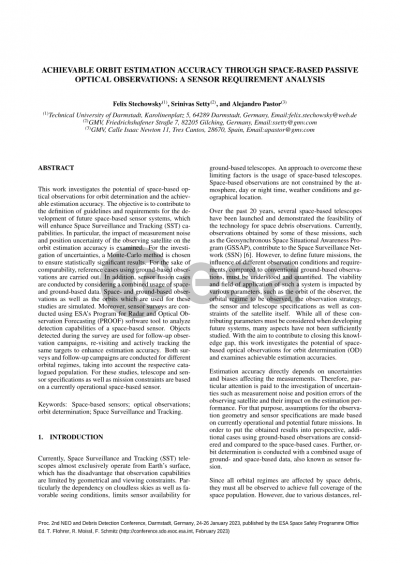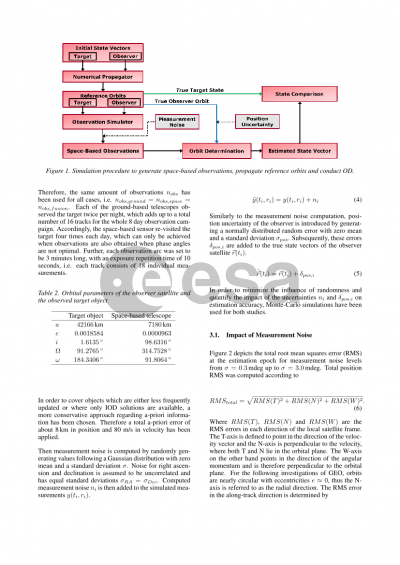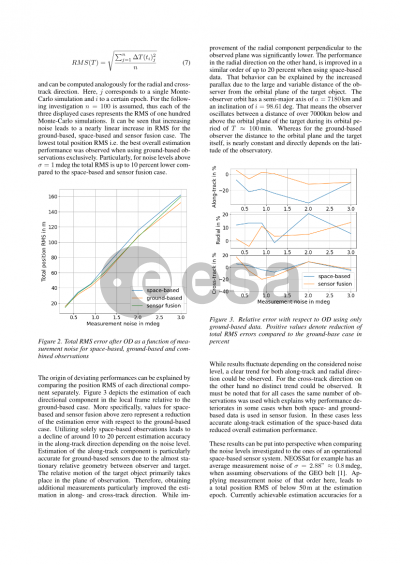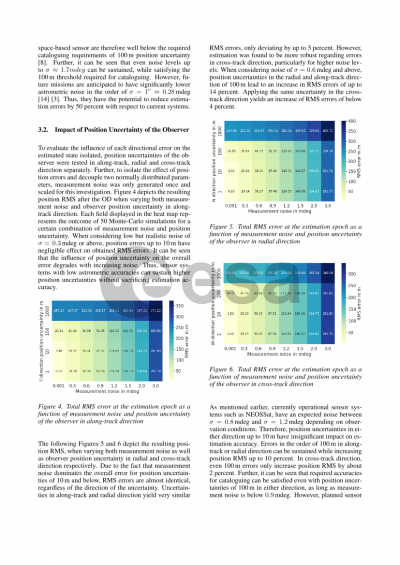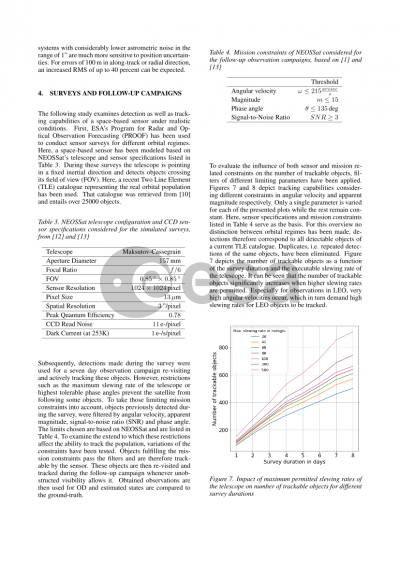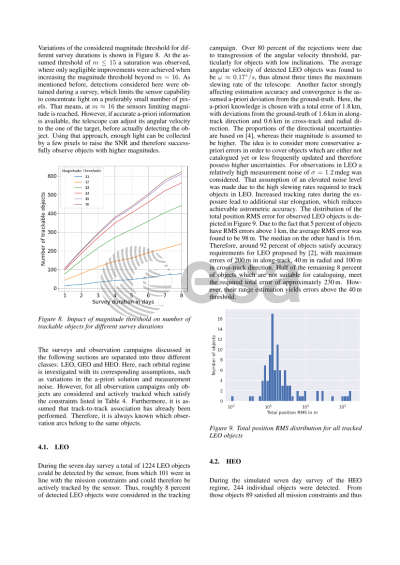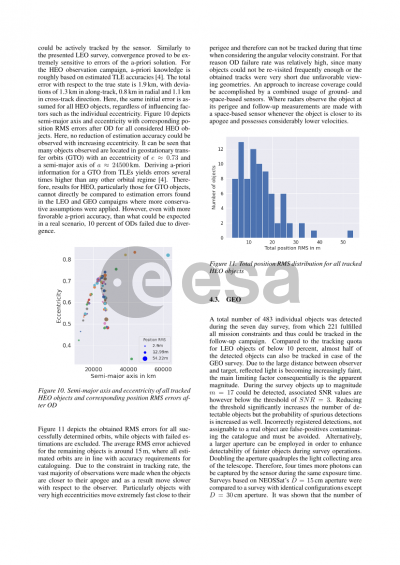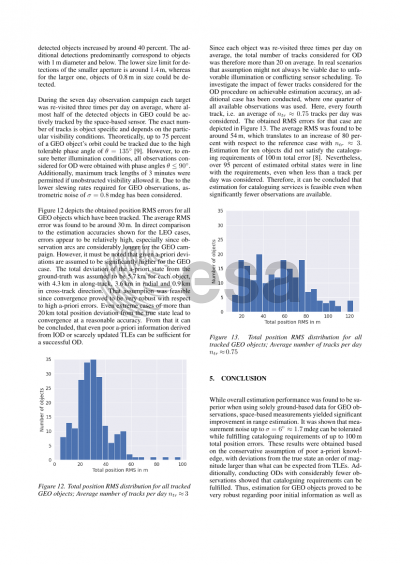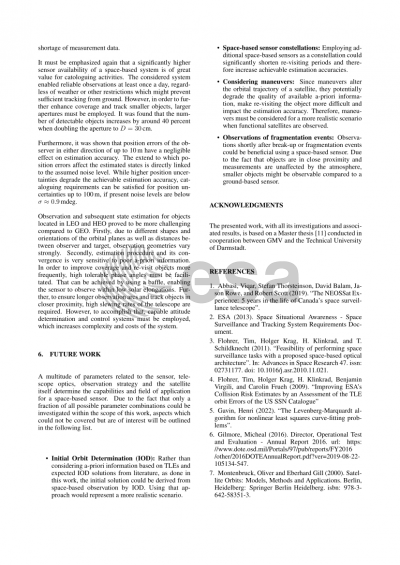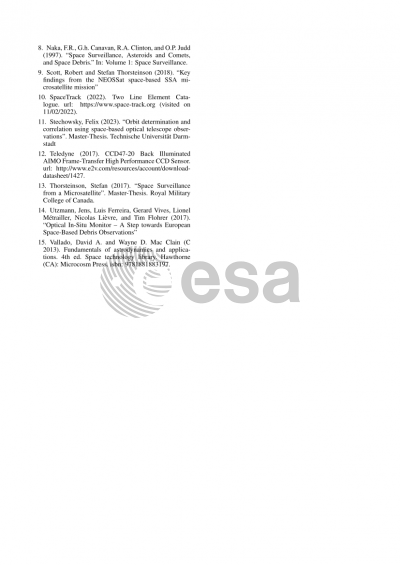Document details
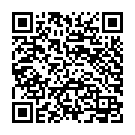
Abstract
Currently, telescopes for debris observations almost exclusively operate from Earth’s surface. This has the disadvantage that observation capabilities are limited by geometrical and viewing constraints and thus prevent a coverage of all orbital regimes and fulfill the space domain awareness needs. A promising approach to overcome these shortcomings, is the usage of space-based observation systems. Since the inception of the idea of space-based observations for space objects the orbital improvement that could be achieved through it has not been sufficiently studied. This paper investigates the potential of space-based optical observations for orbit determination, its achievable orbital accuracy, and subsequently deriving the requirements for a space-based sensor. The objective is to contribute defining reliable guidelines and requirements to develop future space-based sensor systems, which will be conducive to enhance catalogue coverage and further improving its maintenance. However, to contribute to Space Surveillance and Tracking (SST) services, the influence of the different observation conditions and requirements, compared to conventional ground-based observations, must be understood and quantified.
Particular attention is paid to the investigation of uncertainties such as sensor noise and positional uncertainty of the observing satellite, as well as their impact on the achievable orbital accuracy using batch estimation. The influence of these uncertainty sources is investigated separately first, and then combined to simulate a realistic scenario. To ensure statistically significant results, Monte-Carlo simulations and uncertainty propagation techniques are employed. Furthermore, variations in the relative geometry between observer and target object are examined to determine the suitability and benefits of certain orbital regime combinations. Reacquisition rates and duration of observation arcs are examined depending on the case specific visibility conditions. The impact of these parameters is then compared regarding their effect on estimation accuracy. Orbit determination using ground- and space-based observations separately as well as their combined usage by sensor fusion are examined. To evaluate the performance, estimated state vectors and their propagated states are compared to a reference orbital state, which serves as a ground-truth. Both, orbits and observations, are simulated using GMV’s flight dynamics software library. Additionally, real observational data are procured through the Unified Data Library (UDL) and are used to test and quantify the methodology and results. Preliminary results show that the orbital estimation procedure is robust to position uncertainties of the observer, that is the space based optical telescope. Increased measurement noise on the other hand substantially degrades the accuracy of the determined orbit with respect to the ground truth. Realistic noise levels based on operational and planned missions, using space-based sensors, showed an improvement with respect to an estimation solely relying on ground-based data.
Preview
